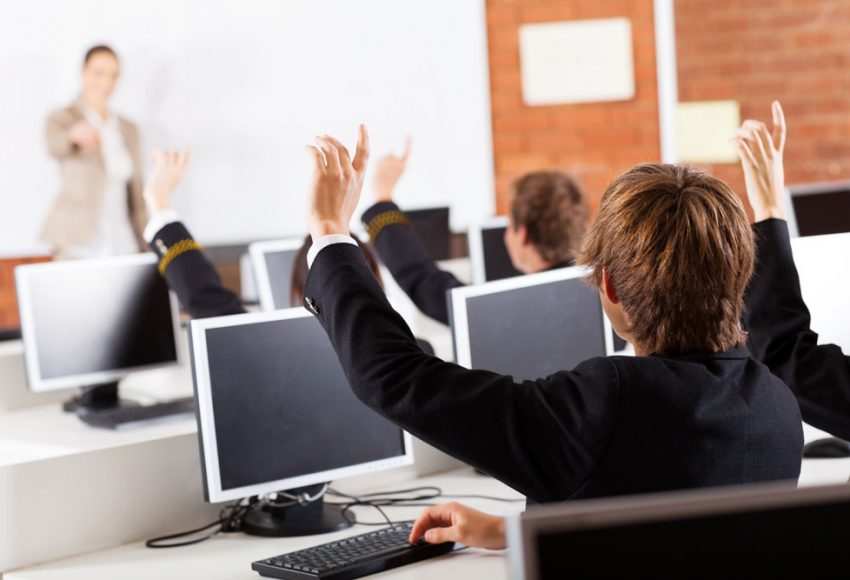How reducing energy improves productivity in learning environments
Introduction
I have worked with many state & private schools, colleges and universities across the UK and have also been a school Governor for the last 5 years. In my experience, I have found that in many cases the classroom environment is not helping learners to learn. Hot, stuffy environments with inadequate lighting often lead to mental fatigue, headaches, boredom and poor learning. I have seen a clear link between learning productivity and energy efficiency. Why is this? Read on…
Badly Behaving Classrooms
Often, schools have been designed and built a long time ago – in the university and private sectors, sometimes hundreds of years ago. As time has passed, new technologies have been applied to these buildings and at the same time, teaching methods have changed and developed. A good example is today’s use of IT in teaching (laptops, projectors, servers, etc.). The buildings and services that are embedded were never designed or intended to operate as they do now.
The effects of modern teaching in existing buildings is that often the heat generated by equipment is not managed, the existing heating systems do not control around the heat gains, the ventilation levels are reduced and the heating plant is often old. Combined with dated lighting systems, one can quickly see how poor learning environments are created.
So how should a classroom behave?
A productive classroom should behave as detailed below. Non-conformance in any of these areas can lead to a poorly performing environment. When two, three, or more areas are in non-conformance then serious problems will exist and manifest.
Temperature
19-21°C in winter and 21-23°C in summer
Overheating
Three parameters have been developed which indicate when overheating is likely to be problematic. These standards apply outside the heating season and are for the occupied period of 09:00 to 15:30, Monday to Friday, from 1st May to 30th September.
- There should be no more than 120 hours when the air temperature in the classroom rises above 28°C
- The average internal to external temperature difference should not exceed 5°C (i.e. the internal air temperature should be no more than 5°C above the external air temperature on average)
- The internal air temperature when the space is occupied should not exceed 32°C.
Air quality
- The maximum concentration of carbon dioxide should not exceed 5000 ppm during the teaching day
- At any occupied time, including teaching, the occupants should be able to lower the concentration of carbon dioxide to 1000 ppm
- Generally, a fresh air supply of 8 litres per second per person will satisfy the above.
Noise
A maximum of 41 dB(A) of background noise from building systems.
Lighting
In general:-
- Daylight factor exceeding 5% means that electric lighting can be switched off.
- Daylight factor between 2-5% means that electric lighting can be dimmed.
- Electric lighting criteria for a general teaching space is a standard maintained illuminance at 300 Lux with a uniformity ratio of 0.8 and limiting glare index of 19.
- Where display screens are used, lighting is to comply with CIBSE Lighting Guide LG3.
How to improve classroom behaviour and productivity
The first step is to measure the parameters of temperature, air quality, noise and lighting. These findings are then cross-referenced to the energy consumption records. In most cases poor results in temperature, air quality, noise and lighting will lead to high energy consumption. This approach will identify problem areas in terms of performance and also energy consumption.
The next step is to fully survey and identify an energy efficiency / productivity improvement programme for the site. This will include behaviour, organisational and technical measures that will fix both productivity issues as well as energy issues.
In my experience, energy efficiency programmes will enable the building to operate at a level that modern users require, at the same time as fixing problems. Solutions such as a new heating boiler system, and/or controls upgrade or perhaps simple ventilation improvements can quickly improve the classroom environment and reduce energy costs in the process. In the same way, a new lighting installation and/or method of lighting control will improve the visual environment and reduce lighting costs.
Typically, overall energy cost savings of 10-20% and sometimes more can be achieved with a 3 year financial payback. More importantly though is the improvement in learning and productivity in the classroom, which is priceless.
How BSSEC can help
BSSEC has developed solutions for many schools, colleges and universities. If you are interested in learning more please do drop me a line at: paul@bssec.co.uk







